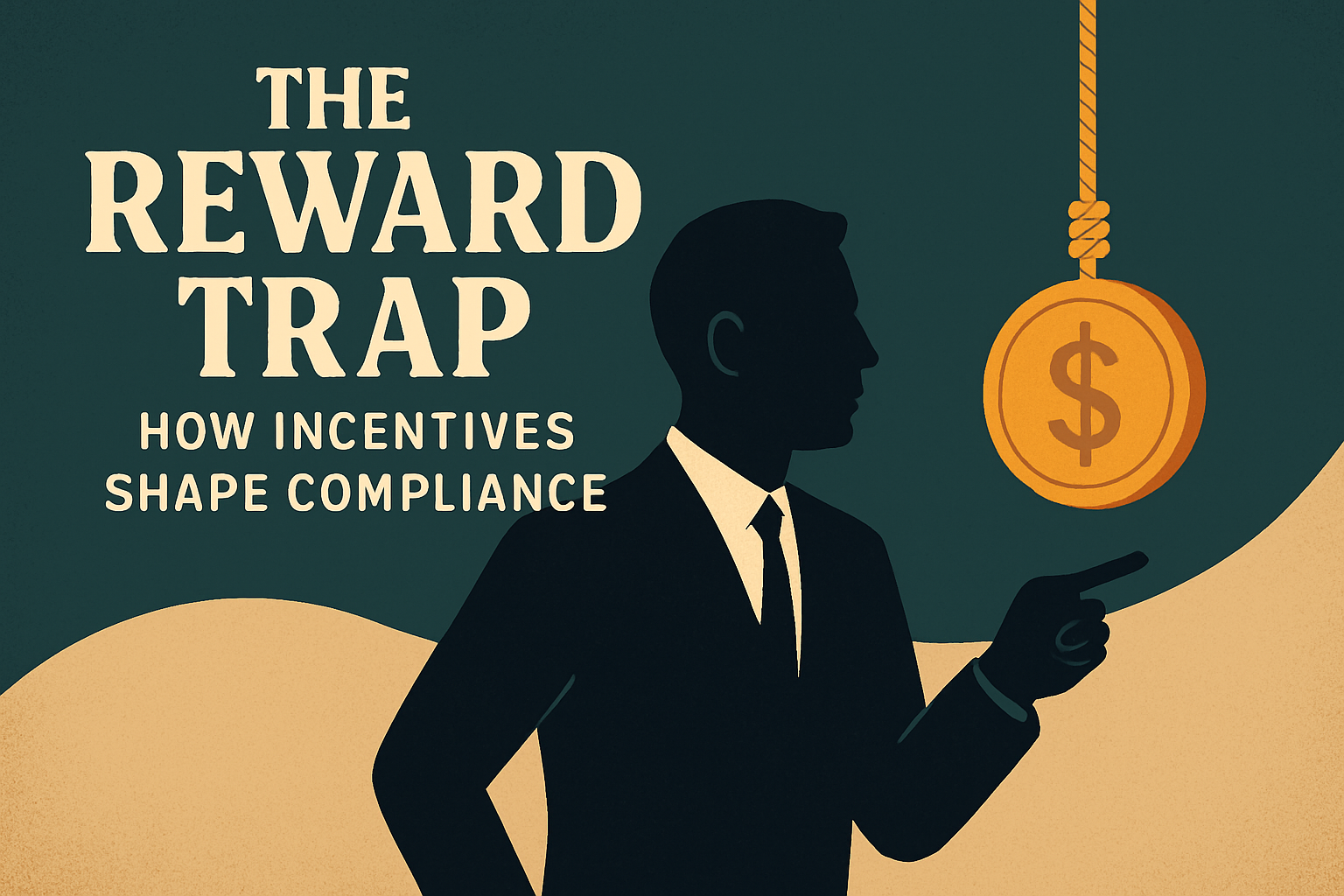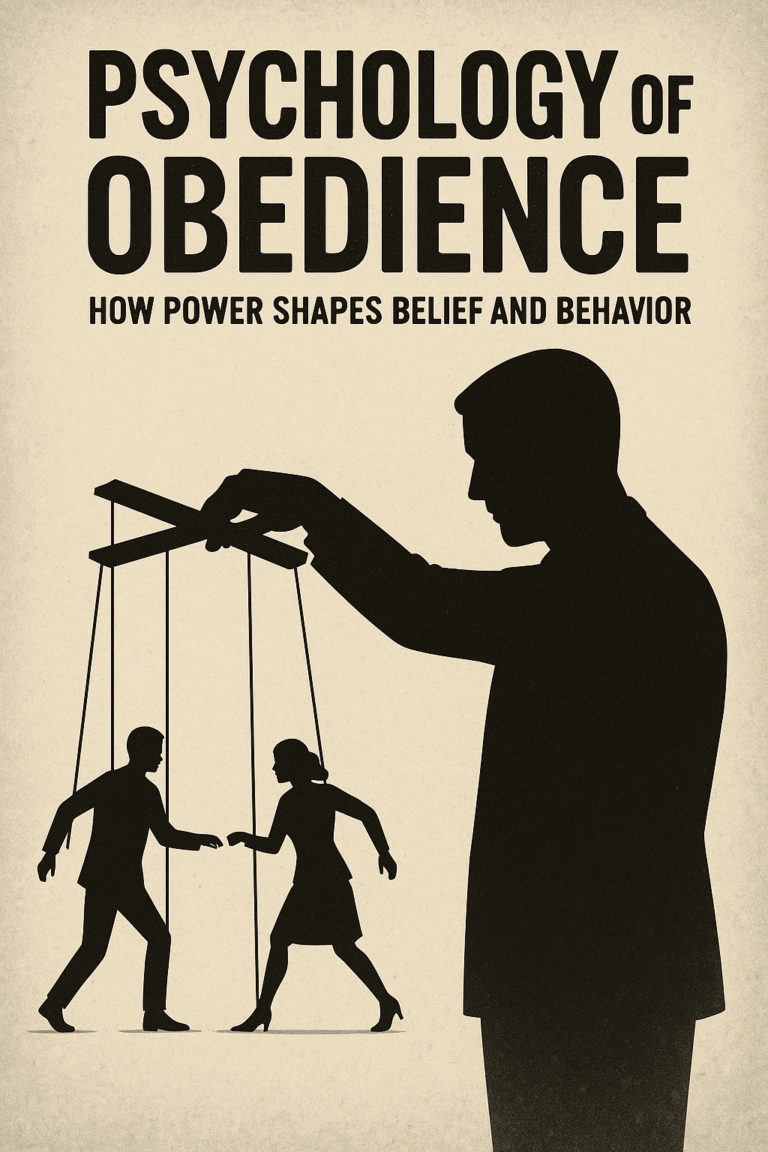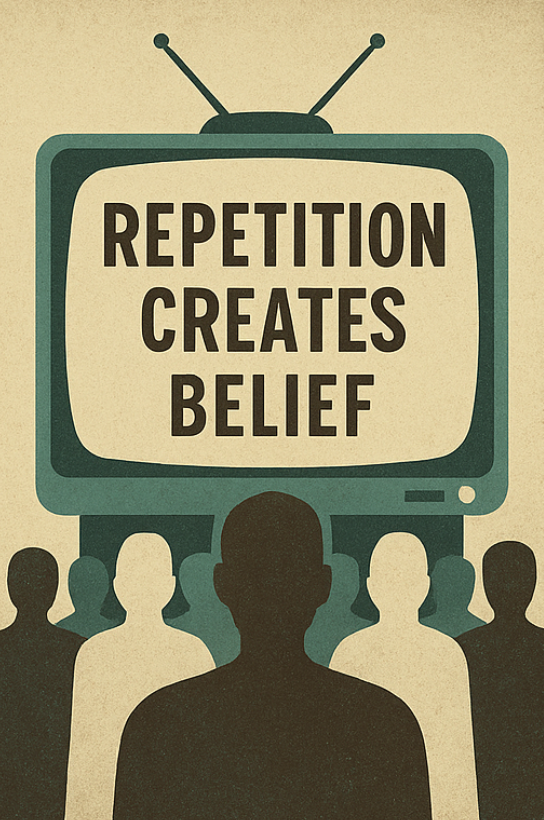Introduction
Modern institutions and systems have become adept at using carrots instead of sticks. From workplaces to social media, we are nudged, enticed, and rewarded into desired behaviors every day. Rather than overt threats or punishments, subtle incentive structures do much of the heavy lifting in securing our cooperation. Indeed, how incentives shape compliance is a defining feature of contemporary life. Our paychecks, good grades, loyalty points, and “likes” on social networks all serve as rewards that encourage us to keep conforming to certain expectations. Psychological research has long observed that positive reinforcement – rewarding the behavior you want – often yields more lasting compliance than punishment of unwanted behavior. This introduction explores the reward trap: the idea that reward systems can be so powerful in shaping human behavior that we may comply automatically, sometimes at the expense of our autonomy. In the sections that follow, we will critically examine the psychology of rewards, how modern society transitioned from ruling by fear to ruling by incentives, examples of incentive-driven compliance in action, the psychological consequences of living in a reward-saturated world, and finally, ways to recognize and resist being trapped by constant rewards. The goal is not to take a partisan stance on whether incentives are “good” or “bad,” but to encourage a thoughtful exploration of their nuanced role in guiding human compliance.
The Psychology of Reward: How Incentives Shape Compliance
At the heart of incentive-driven compliance is a simple psychological mechanism: behavior that is rewarded tends to be repeated. This principle, first formalized in 19th-century psychology as Thorndike’s Law of Effect, underpins much of behavioral science and everyday experience. Neuroscience now provides a clearer picture of why rewards work. When we experience something rewarding – whether it’s sweet food, social praise, or a monetary bonus – our brain’s reward circuitry releases dopamine, producing a feeling of pleasure and reinforcing the behavior to encourage repetition. In essence, our brains evolved to treat rewards as signals of “do this again,” which is exactly how incentives shape compliance on a biological level. We learn to comply with certain behaviors or rules because doing so feels good or yields satisfying outcomes.
Importantly, rewards can be tangible (like money or prizes) or intangible. Social and emotional rewards are often just as influential. For example, the warm glow of approval from peers or authorities can act as a powerful incentive. Classic social psychology experiments illustrate this: in Solomon Asch’s famous conformity studies, about 75% of participants went along with a group’s obviously incorrect answer at least once. While there was no material reward, the incentive was the social reward of fitting in (or conversely, avoiding the discomfort of sticking out). Humans are deeply social creatures, and the promise of acceptance or esteem can shape compliance as strongly as coins or candy. The psychology of reward therefore encompasses both our primal neural responses to pleasure and our complex social desires for validation.
Another key aspect is that reward-driven compliance tends to be positive-sum – it encourages people to do more of something desirable, rather than simply not do something. This can create a more enthusiastic form of compliance. A student might diligently complete homework because she earns praise or good grades (rewards), not just to avoid failing (punishment). An employee might follow company policy with a smile if there’s a bonus at year-end, rather than merely out of fear of being fired. In these ways, incentives can engender a more willing, even eager, form of compliance. The mind is essentially being trained to associate compliance with positive outcomes. Over time, those positive outcomes (good grades, bonuses, likes) build habits and expectations – we start complying automatically because we have internalized the reward loop.
Yet this psychological power of rewards is double-edged. While it can channel behavior constructively, it also raises concerns of manipulation. Are we choosing our actions, or merely responding to a proverbial carrot dangled before us? As we shall see, psychologists and philosophers have long wrestled with this question, recognizing that how incentives shape compliance can subtly erode the perception of free choice. Before exploring those deeper implications, we will first look at the foundational science of using rewards to shape behavior: operant conditioning.
Learn more about the brain’s reward system here.
Operant Conditioning and the Power of Positive Reinforcement: How Incentives Shape Compliance
Long before we spoke of “incentive programs” or “gamified apps,” researchers like B.F. Skinner were uncovering the mechanics of reward and behavior through operant conditioning. Operant conditioning is the process by which behaviors are learned (or unlearned) based on the consequences they produce. In Skinner’s classic experiments, a rat in a laboratory chamber – the famous Skinner box – might accidentally press a lever and receive a food pellet. This pleasant consequence (a reward) increases the likelihood that the rat will press the lever again. With enough repetitions, the rat complies with the implicit “rule” of the box: press the lever to get food. Skinner showed that by carefully timing rewards (positive reinforcement) for desired behaviors, one could train animals to exhibit remarkably complex responses. Pigeons, for instance, were taught to peck keys in specific sequences or even “play” ping-pong by rewarding successive approximations of the target behavior.
The power of positive reinforcement lies in its ability to shape behavior gradually and gently. Unlike punishment, which tells an organism what not to do (often generating fear or avoidance), incentives shape compliance by guiding an organism toward what to do by making that behavior satisfying. Skinner and his followers found that this method can yield very high levels of compliance without the drawbacks of fear or resistance that punishment often brings. In fact, Skinner argued that society should rely far more on positive reinforcement and minimal aversive control. He famously suggested that free will is essentially an illusion and that human actions are always conditioned by their past rewards and punishments. If true, this provocative claim implies that how incentives shape compliance isn’t just a technique a manager or teacher uses – it may be the primary way all of us learn to behave as we do.
In everyday terms, operant conditioning is at work whenever we catch someone doing something right and reward them. Modern parenting and education are full of this approach. Rather than scolding a child for misbehaving, experts advise finding opportunities to praise or reward the child for good behavior, thereby reinforcing it. A sticker chart for completing homework, a customer loyalty program that gives you free coffee after ten purchases, or an app that congratulates you for meeting your step-count goal – all are examples of operant conditioning principles in action. They make compliance attractive. Over time, the external reward can become internalized as habit or even enjoyment of the activity itself.
One important nuance discovered in operant conditioning research is the role of schedules of reinforcement. Continuous rewards (every correct action gets a prize) can strongly establish a behavior, but intermittent rewards often make behaviors more resistant to extinction. This is why a slot machine (which pays out only occasionally and unpredictably) can be so habit-forming – a classic case of variable reinforcement schedule creating persistent compliance (in this case, continuously feeding coins into the machine). Such insights have been adopted well beyond the lab. From video games that randomly drop rare rewards to workplace incentive systems that give occasional spot bonuses, the science of reinforcement maximization is widely applied to keep us engaged and compliant.
Skinner’s work also illustrated the potential ethical quandaries of a reward-based system. In his utopian novel Walden Two, he imagined a society engineered through positive reinforcement, where people’s behaviors were so effectively shaped by rewards that social harmony was achieved without police or jails. But this raises an uncomfortable question: if everyone is happy doing what they are conditioned to do, is that freedom, or a sophisticated form of control? Skinner’s contemporary critics and later philosophers would explore this tension. For now, what’s clear is that positive reinforcement is a powerful tool for shaping compliance. When used consciously, it can motivate learning and cooperation in constructive ways – students studying harder when praised or paid for grades, employees striving for excellence when bonuses are on the line. The next section examines how society at large has increasingly moved towards such incentive-based systems and away from overt punishment, essentially turning Skinner’s insights into a core social strategy.
Learn more about operant conditioning here.
The Evolution from Punishment to Incentives in Social Systems: How Incentives Shape Compliance
History shows a clear evolution in how authority seeks compliance: where once the lash of punishment reigned, now the lure of reward often holds sway. Pre-modern societies and strict regimes predominantly enforced order through fear, pain, and coercion – think of draconian laws, corporal punishment in schools, or the public stocks and gallows. Compliance was extracted by making the cost of disobedience unbearably high. However, as civilizations progressed (and as ethical standards rose), social systems began experimenting with a carrot-and-stick mix, and gradually tilting toward the carrot. Discipline, as Michel Foucault detailed, came to rely on a “double system of gratification-punishment” – a careful balance of rewards and penalties. In schools, for instance, 19th-century educators were advised to avoid harsh punishment as much as possible and instead “make rewards more frequent than penalties,” on the insight that students are “more encouraged by the desire to be rewarded… than by the fear of punishment”. In other words, even in early modern institutions, authorities recognized how incentives shape compliance more gently and perhaps more effectively than fear alone.
By the mid-20th century, many social institutions had formally shifted their emphasis. Prisons, for example, introduced privilege systems and earned time off for good behavior. Rather than solely punishing infractions, prisons began rewarding compliance (e.g. access to better jobs, extra visitation rights for inmates with clean conduct records). One systematic review of prison programs notes that rewards serve as incentives for inmate compliance, encouraging order up to the point of release. Schools moved from the days of the ruler across the knuckles to gold-star reward charts and honor rolls. In the workplace, management philosophies evolved from authoritarian “Do as I say or you’re fired” approaches to models like positive reinforcement leadership, where employees are motivated with praise, bonuses, or promotions. This mirrors a broader cultural change: modern organizations seek to engage and incentivize rather than merely threaten.
Why this evolution? One reason is effectiveness. Carrots can often achieve what sticks cannot. It’s “much easier to change an established behavior by offering rewards, rather than threatening with punishments” as one behavioral economics model concludes. Punishment may stop unwanted behavior in the moment, but rewards can actively encourage the desired behavior to grow. Another reason is ethical and social palatability – democracies and progressive communities prefer to minimize cruelty and coercion. Governing through incentives aligns better with values of individual choice: people feel they are voluntarily opting in for a reward, rather than being forced under duress.
Furthermore, an incentive-driven system can harness individuals’ self-interest to align with social goals. For example, governments increasingly use policy incentives to guide citizen compliance: tax credits for installing solar panels (to encourage eco-friendly behavior) or reduced insurance premiums for healthy lifestyle choices. Such measures attempt to shape compliance with societal norms (like sustainability or public health) by rewarding desired actions instead of imposing new fines or laws. The rise of nudge theory in public policy is another facet of this shift – subtle tweaks that make the beneficial choice also the easy or rewarding choice (though not always a material reward, nudges often create a small psychological incentive).
None of this is to say that punishment has disappeared. Our legal systems, for instance, still rely on penalties for deterrence. But even in law enforcement, there is greater focus today on compliance through incentives: programs that divert offenders into reward-based rehabilitation, probation systems that offer early termination for good behavior, etc. In the ideal case, once a norm is established through rewards, only a light threat of punishment is needed to maintain it. We can see a continuous thread from Foucault’s observations of eighteenth-century disciplinary methods to today’s motivational designs: compliance is most stable when people want to do what authority wants them to do. Reward systems cultivate that want. As we transition to concrete modern examples, consider how many facets of your own life involve an interplay of incentives encouraging you to follow certain rules or routines.
Read about Foucault’s analyses here.
Modern Examples of Incentive-Driven Compliance
In today’s world, incentive-based compliance isn’t an abstract concept – it’s something we experience from morning to night. Here are a few salient examples that show how incentives shape compliance across different domains of modern life:
- Social Media and Technology: Platforms like Facebook, Instagram, or TikTok are designed as reward machines. Each like, comment, or notification is a tiny dopamine reward that keeps users posting and scrolling. We comply with the platform’s goal (staying engaged online) because the system gives us constant positive feedback. Studies have shown that the stream of “retweets, likes, and shares” triggers the brain’s reward areas much like an addictive substance, with each notification delivering a quick dose of dopamine pleasure. Users, drawn by these social rewards, willingly divulge personal data, spend hours of their time, and even adjust their self-expression to maximize positive feedback – effectively complying with the implicit rules of social media for the reward of social approval.
- Gamification of Work and Commerce: Many companies use game-like incentive systems to shape behavior. Rideshare drivers for Uber or Lyft, for instance, often see messages like “You’re only 2 rides away from a $50 bonus!” on their app – a gamified carrot to encourage longer hours. Uber’s “Quest” bonus offers drivers extra cash if they complete a set number of rides in a certain time, which on the surface is a reward for hard work. In practice, it can cleverly manipulate drivers to keep driving even when they might otherwise stop, illustrating the fine line between incentive and exploitation. In retail, loyalty programs (points, rewards cards, frequent flyer miles) incentivize customers to comply with repeat purchasing behavior. We might choose one coffee chain consistently because we’re “earning rewards” there, effectively complying with corporate marketing aims without feeling forced – it’s voluntary, because we want that free coffee after ten purchases.
- Governance – The Social Credit System: Perhaps the most sweeping real-world example of engineered compliance through incentives is China’s evolving social credit system. This nationwide system (still being refined and regionalized) aims to “rank” citizens based on their trustworthy or pro-social behavior. While much attention is given to the punishments (like travel bans or slow internet for low scores), the system also lavishly rewards good citizens. Individuals with high social credit scores enjoy perks such as fast-tracked travel visas, the ability to rent bikes or book hotels without deposits, discounts on utility bills, better interest rates at banks, and even boosted profiles on dating sites. All these rewards create a strong incentive to comply with prescribed behaviors (paying debts on time, obeying traffic rules, donating to charity, etc.). One could view it as a massive carrot-and-stick experiment: by making obedience profitable and convenient, the state shapes compliance with social norms. Dystopian or not, it’s a testament to the power of incentives at a societal scale.
- Everyday Education and Parenting: On a smaller scale, classrooms and households continuously use incentive-driven compliance. Schools have honor rolls, student-of-the-month awards, and token economies where kids earn points or privileges for good behavior. Parents might use star charts or offer extra screen time if chores are done. These are commonplace examples of using rewards to secure compliance with rules or desired habits. The effectiveness is usually immediate – a child will often eagerly do a task if promised a favorite treat – but as we’ll discuss in the next section, there can be long-term psychological trade-offs if overused. Still, when balanced carefully, these incentives can help children internalize positive behaviors in a supportive way (for example, a reluctant reader might become an avid one after initially being enticed by pizza coupons for reading books).
From these examples, we see that incentives shape compliance spanning from the trivial to the profound. Modern life is suffused with designed rewards that guide our choices: fitness apps give us badges for running an extra mile, credit card companies dangle cash-back rewards to make us spend, employers implement “employee of the week” recognitions to encourage certain work ethics. In many cases, we aren’t consciously thinking “I must comply; otherwise I’m punished” – instead, we’re thinking “If I do this, I get something I want.” That subtle shift illustrates why incentivization can be so effective and palatable. It enlists our own desires in service of compliance.
Of course, there is a flip side. As incentives proliferate, one wonders: Are we conditioning ourselves to expect a reward for everything we do? What happens when we start asking “What’s in it for me?” before cooperating or when the rewards are removed? The next section delves into the psychological consequences of living in a world where nearly every action seems to have a point score, a ‘like,’ or a perk attached to it.
Read about China’s social credit model here.
Psychological Consequences of Living in Reward-Based Systems: How Incentives Shape Compliance
Living under the constant influence of rewards has nuanced effects on the human psyche. In the short term, incentives can energize and focus us. In the long term, however, psychologists warn of several potential pitfalls of the “reward trap.” One well-documented phenomenon is the overjustification effect, which occurs when an external reward undermines a person’s intrinsic motivation to perform a task. In classic experiments, for example, children who loved drawing were divided into groups: some were promised a reward for drawing, others were not. Those who had come to expect a reward showed less interest in drawing later on, once the reward was gone – they had unconsciously shifted to drawing “only for the reward” rather than for the joy of it. This effect poses an interesting question: can incentives shape compliance at the expense of intrinsic internal drive if people become too accustomed to being rewarded for an activity? In a society full of incentives, one risk is that we raise individuals who are externally motivated at the expense of developing their own values or passions.
Another consequence is the potential for dependency and reduced autonomy. If from childhood we are trained that compliance always brings a reward, we might struggle to act rightly when a reward isn’t immediately visible. Alfie Kohn, an education critic, famously argued that both rewards and punishments are techniques of manipulation that can “destroy the potential for real learning” and genuine interest. He quotes research calling rewards “control through seduction” – a pointed phrase suggesting that being inundated with rewards can lull us into a controlled state while giving the illusion of choice. When our workplaces, apps, and authorities all use rewards to direct our behavior, we might comply gladly – but we are still being directed. Over time, people might become less practiced in critical thinking or moral reasoning (“what should I do?”) and more inclined to simply follow whichever incentive is most attractive (“what will I get if I do this?”). In psychological terms, excessive extrinsic motivation can crowd out intrinsic motivation, potentially diminishing qualities like creativity, initiative, and ethical judgment.
The reward trap can also affect our emotional well-being. Chasing constant rewards – whether they are promotions, trophies, or social media likes – can lead to anxiety and a fragile sense of self. If one’s self-worth becomes tied to external validation, the absence of expected rewards may bring disappointment or a sense of failure. Moreover, what happens when everyone is optimizing for rewards? In a workplace, if all employees are vying for a limited bonus pool, it could encourage competition over collaboration, or even cheating and corner-cutting, in order to win the reward. In classrooms, students might focus narrowly on grades rather than learning (a common complaint in highly test-driven educational systems). In society at large, we might see a kind of compliance without reflection – people following rules to get goodies, without internalizing whether those rules are just or wise. For instance, if a city introduces a reward for citizens reporting minor infractions by neighbors, compliance with that program might increase (more reports filed), but it could corrode trust and social cohesion – a subtle psychological cost.
None of this is to say that incentives are evil or that we should abandon all reward systems. Rather, it highlights the need for balance. Human psychology thrives on intrinsic motivations: our curiosity, our sense of purpose, our social bonds and ideals. When every aspect of behavior is incentivized, there’s a danger of reducing activities that have inherent value into merely a means to an end (the reward). Erich Fromm, mid-20th-century social psychologist, observed how modern humans often escape the burden of freedom by conforming to societal expectations automatically. People become “social chameleons,” he noted, adopting the values and behaviors that win approval so that they “no longer feel alone” – but in the process, they are “not themselves either”. This describes a psychological compromise: we comply and fit in to gain the reward of belonging, yet we might lose sight of our authentic self or convictions.
The psychological consequences, then, can be summarized as follows: rewards shape compliance effectively, but over-reliance on rewards can sap intrinsic motivation, personal autonomy, and even joy. In an environment where one is perpetually performing for the next reward, life can become a series of transactions rather than a freely chosen journey. Recognizing these consequences is important for individuals and institutions alike. It doesn’t mean rejecting incentives altogether, but it does call for mindful use of them. As we move to the final section, the question becomes: how can we enjoy the benefits of incentives (they do work, after all) without falling into the trap of being controlled by them? In other words, how can we reclaim autonomy in a reward-saturated world?
Read about Kohn’s argument that rewards and punishments both “manipulate behavior” and undercut real learning here.
Resisting the Reward Trap: Reclaiming Autonomy
Is it possible to live with incentives yet not be ruled by them? This concluding section explores ways individuals and societies can maintain autonomy and conscious choice in the face of ubiquitous reward systems. The first step is awareness. Simply recognizing when we are being influenced by an incentive allows us to pause and ask: “Is this action aligned with my own values and goals, or am I just chasing a reward?” By bringing such incentives to light, we regain some power to decide. For instance, one might enjoy using a fitness app but consciously chooses to run an extra mile for the health benefits and personal satisfaction, not just to collect a virtual badge. Awareness turns a potentially mindless compliance into a mindful decision.
Another strategy is to cultivate intrinsic motivation wherever possible. This can mean taking time to reconnect with the inherent enjoyment or meaning of activities. If you’re a manager or teacher, it means not relying solely on bribes and bonuses, but also appealing to people’s sense of purpose and curiosity. Psychologists Edward Deci and Richard Ryan, founders of Self-Determination Theory, suggest that people thrive when they feel autonomy, competence, and relatedness – in other words, when they have some choice in their actions, feel capable, and connect to others. Structuring environments to fulfill these needs can motivate compliance in deeper, more self-directed ways than external rewards alone. For example, instead of a strict reward chart for reading, a parent might let a child choose books that genuinely interest them, fostering a love of reading that persists even when no one is praising or paying them.
Practically speaking, one might also implement occasional “detox” periods from extrinsic rewards – a concept sometimes termed a dopamine fast. This doesn’t mean literally stopping dopamine in the brain, but rather taking breaks from the constant stimulation of reward-driven activities. A psychiatrist, Dr. Anna Lembke, recommends exercises like a 24-hour break from smartphones or social media to recalibrate one’s brain and experience “real freedom” away from the digital reward cycle. Many people find that after an initial wave of restlessness, stepping away from these external feedback loops (no likes, no pings for a day) brings a sense of relief and renewed autonomy. It reminds us that we can exist and be content without needing a pat on the back every few minutes.
On a societal level, resisting the reward trap might involve designing better incentive systems. Policymakers and leaders can strive to create incentives that encourage long-term well-being and integrity, rather than short-term compliance at any cost. For instance, rather than measuring teachers purely by student test scores (which might incentivize teaching to the test at the expense of real learning), evaluation systems could include peer reviews and self-assessments that incentivize professional growth and collaboration. In the corporate world, instead of solely rewarding quarterly profits (which might prompt unethical shortcuts), companies can tie rewards to customer satisfaction, innovation, or sustainability metrics, aligning incentives with broader values. In short, making sure the right behaviors are incentivized helps ensure that compliance serves meaningful goals, not just immediate gains.
Philosophically, we might take inspiration from thinkers like Erich Fromm, who urged individuals to embrace their freedom rather than flee into comfortable conformity. Fromm believed that true power and happiness come from “expressing our true selves” – doing what we truly want to do or believe is right, rather than what we think we are supposed to do to get a reward or approval. In practical terms, this could mean at times choosing the path that is harder or less immediately rewarded because it aligns with one’s principles or genuine interests. It’s the student deciding to study art because it’s her passion, even if another field might promise a bigger paycheck. Or the employee who voices a truthful but unpopular opinion at a meeting, prioritizing integrity over the incentive of staying in everyone’s good graces.
Ultimately, understanding how incentives shape compliance is empowering. It allows us to take a step back and see when our strings are being pulled – and perhaps to reassert control over the strings. Incentives and rewards, used wisely, can enrich life, motivate improvement, and organize group efforts efficiently. Used carelessly or excessively, they can become traps that narrow our motivations and quietly condition us. The key is conscious engagement: enjoying rewards, but not becoming dependent on them; following rules, but not unthinkingly; creating incentive systems, but revising them when they have perverse effects. By staying vigilant and reflective, individuals can reclaim autonomy even in a landscape filled with golden carrots. In the end, the goal is a society where compliance is not merely a reflex to rewards, but a conscious choice – where we choose when to take the carrot, when to ignore it, and when to walk our own path, fully aware of why we do what we do. Such a balance allows us to reap the benefits of incentives while remaining, in the deepest sense, free.
Read about Fromm’s views on the power of authenticity here.








